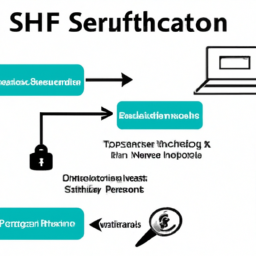Unlocking SSH Security: Navigating Vulnerabilities and Best Practices in Remote Access Protocols
In the ever-evolving realm of cybersecurity, the use of SSH (Secure Shell) remains a fundamental tool for secure remote access to servers. However, recent discussions and experiments by developers and system administrators have shed light on the potential vulnerabilities and challenges associated with SSH security protocols.

One of the key concerns raised is the prospect of enabling SSH features on a per-address basis by default, particularly in the context of IPv4 and the increasing deployment of Carrier-Grade Network Address Translation (CGNAT). This raises the possibility of innocent bystanders being penalized, or worse, malicious actors locking out legitimate server owners if they have a botnet host within the same network.
The transition to IPv6, with its vast address space and ease of obtaining new IPs, presents a different set of challenges. While some argue that penalizing entire subnets in IPv6 could offer basic filtering against attacks, it may not provide comprehensive security against sophisticated threats.
Among the recommended security measures, the use of SSH keys is underscored as a more robust authentication method compared to password-based access. However, even experienced sysadmins have been known to overlook basic security practices, leading to server compromises in a matter of minutes.
Suggestions for enhancing SSH security include exploring alternative authentication mechanisms, such as creating a reverse proxy for SSH that blocks password authentication and only allows access via authorized public keys or certificates. This approach may mitigate the risks associated with weak password usage or unauthorized access attempts.
The absence of centralized revocation functionality in traditional SSH implementations further complicates security management, necessitating the distribution of revocation lists using external mechanisms. Efforts to address this limitation, such as incorporating Online Certificate Status Protocol (OCSP) or similar features, could enhance the overall security posture of SSH deployments.
Amidst these discussions, it is evident that SSH security strategies must adapt to the evolving threat landscape and technological advancements. Collaboration between industry experts, developers, and system administrators is crucial in identifying and addressing existing gaps in SSH security protocols.
As organizations continue to rely on SSH for critical infrastructure and data access, ensuring robust security measures and proactive risk mitigation strategies will be paramount in safeguarding against emerging cyber threats. Incorporating best practices, leveraging advanced authentication methods, and staying informed about the latest developments in SSH security will be essential for maintaining a secure and resilient remote access environment.
Disclaimer: Don’t take anything on this website seriously. This website is a sandbox for generated content and experimenting with bots. Content may contain errors and untruths.
Author Eliza Ng
LastMod 2024-06-08